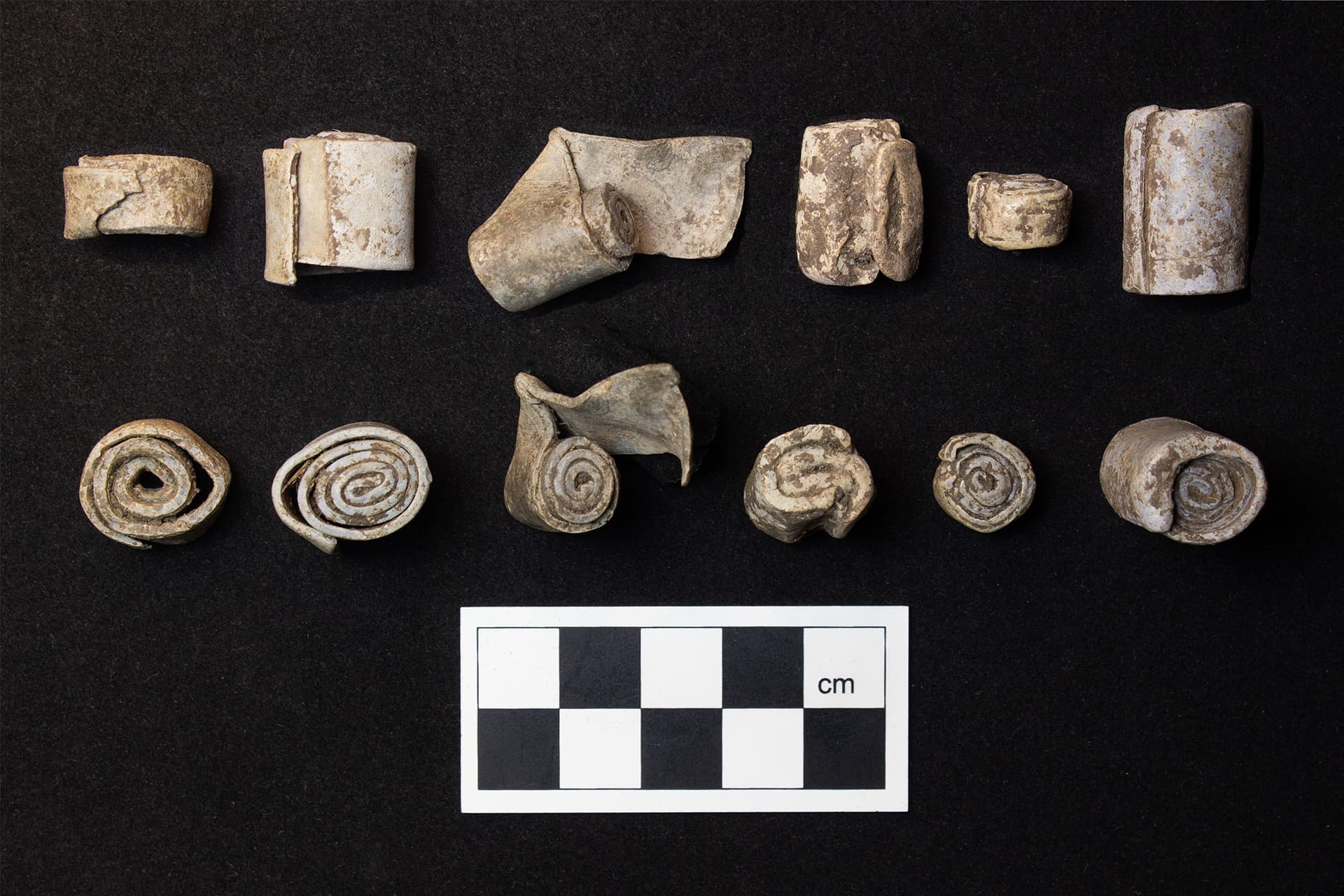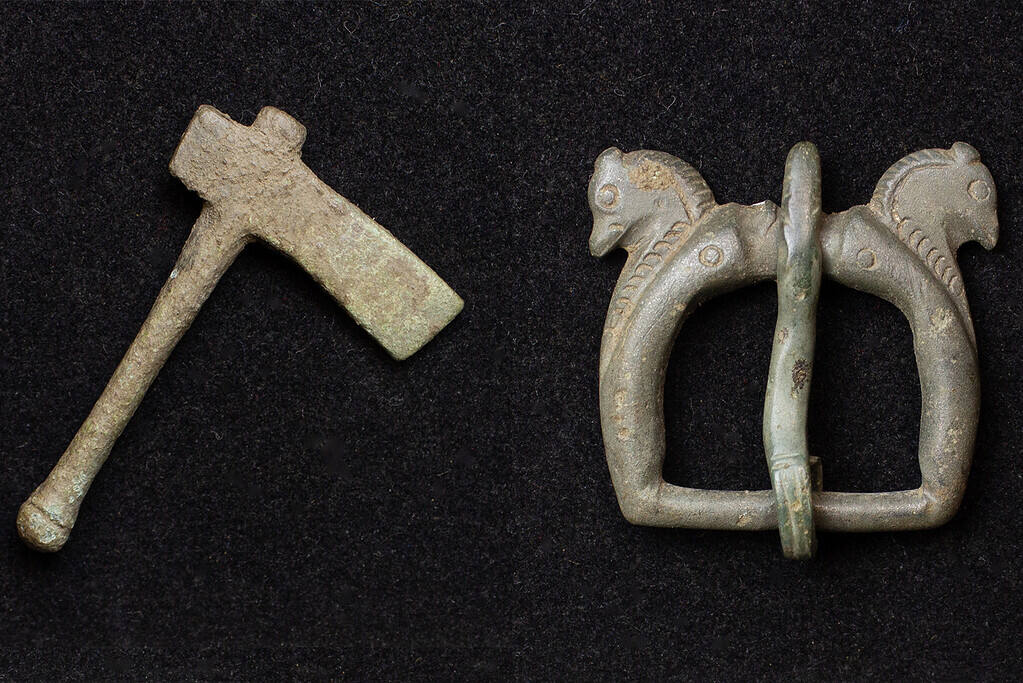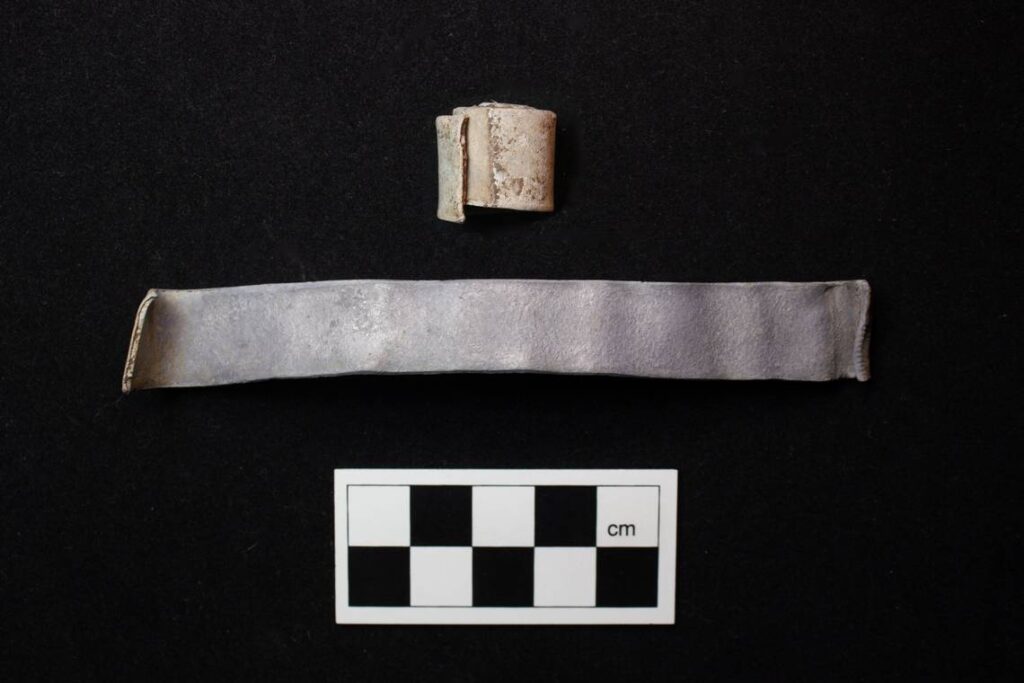A team of archaeologists has found the remains of a 1,800-year-old Roman villa complex in Grove, a village located about 112 km (70 miles) west of London in Oxfordshire. Inside it, researchers found scores of artifacts — including something very spicy: lead scrolls suspected to contain curses.

Britain was under Roman rule for more than 350 years between 43 AD and the early fifth century. The findings at Grove date from this period of Roman Britain.
Researchers unearthed coins, jewelry, floral motifs, votive axes, painted plaster, brick flooring, coiled lead scrolls, mosaics, and a 1,500-year-old horse-headed buckle. These expensive materials and fine artifacts suggest that the estate was once inhabited by elite Romans.
“The owners of these villa complexes are assumed to be both local landowners adopting Roman ideas, and Romans who have settled in the country. Showing a Romanisation of the countryside, such complexes are considered the pinnacle of Roman society in Britain,” Louis Stafford, senior project manager at Red River Archaeology, the company which is conducting the excavation, told ZME Science.
What’s so special about this Roman villa?

Finding Roman structures is always exciting, but this one is pretty unusual in its richness.
The presence of the villa complex suggests that the site was once an important center of Roman activity because villas weren’t only used as residential properties by the Romans.
“These complexes range from agricultural administration centers for an individual family to more grand complexes which include baths and temples which may have been utilized by a wider community,” Stafford said.
The unearthed villa complex is huge, covering an area of approximately 60 x 45 meters (~200 x 150 feet). It has multiple rooms and a central corridor. This was a high-end establishment equipped with painted plaster, floral motifs, brick flooring, and other decorations.
The researchers also discovered an oven-like structure in the complex that was probably used for drying grains. Plus, it had a hypocaust. This is an underground heating system that ancient Romans used to keep their buildings and bathrooms warm by funneling heat beneath the floor. Yes, the Romans had radiant floor heating!
Right next to the villa, there is an aisled building with a big hall. The paint and decorations on this building suggest that it was owned by the same family that lived in the villa.
“The sheer size of the buildings that still survive and the richness of goods recovered suggest this was a dominant feature in the locality if not the wider landscape,” Stafford said.
What about the lead scrolls?

Among the trove of artifacts, the archaeologists also found many tightly coiled lead scrolls at the villa site. It is believed that ancient people used these rectangular sheets of lead to write wishes or curses directed toward other people. The sheet would be rolled and placed in an offering pit.
“Sheets of lead and tightly wound lead scrolls have been known on ritual temple sites to contain writing with prayers or curses on individuals given to patron gods. Several of the discovered scrolls have been sent to a specialist to be opened, however, to date, none have writing that can be seen,” Stafford told ZME Science.

Curse tablets and scrolls were quite common throughout the ancient world — even in more recent times people employed them. In late 2023, archaeologists in Germany unearthed a small lead scroll beneath a latrine in the German city of Rostock. The Medieval tablet, dating from the 15th century, was inscribed with “sathanas taleke belzebuk hinrik berith.”
It summons the demons Satan, Beelzebub, and Berith against a man named Hinrik and a woman named Taleke. This may have been a curse meant to break a romance. The fact it was found at the bottom of a latrine makes sense. Curse scrolls were supposed to be placed somewhere very hard to find.

The researchers also mention votive axes, among the artifacts recovered at the site. Although shaped like axes, there were not functional tools or weapons. Instead, these were ceremonial and symbolic objects that the ancients offered as a votive deposit — items that are left or buried as offerings to deities or spirits, often at religious sites, to gain favor, fulfill vows, or as acts of devotion.
The presence of lead scrolls and votive axes hints that maybe the villa complex wasn’t mainly used as a residence or as an administrative center, but rather as a place for worship and performing rituals. However, more information is required to confirm these assumptions.
Excavation is still ongoing at the site, and archaeologists will soon send the remains and artifacts to a lab for further examination.









